Amulets
Future research from the Petrie typology of amulets
The five amulets below illustrate the five classes proposed
by Petrie, and the chronological scope of material, in Petrie
1914
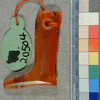 |
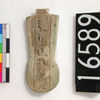 |
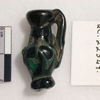 |
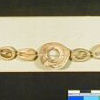 |
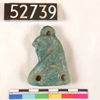 |
|
Amulets of similars
Carnelian leg amulet
First Intermediate Period
|
Amulets of powers
Faience counterpoise
Late Period
|
Amulets of property
Glass model vessel
Roman Period
|
Amulets of protection
conus shell
Third Intermediate Period
|
Amulets evoking gods
faience falcon head
Roman Period
|
Two of the more serious methodological objections to the classification system
are (1) changes over time and (2) the meaning of items within sets.
1. change over time
Petrie gathered together material from several thousand years of Egyptian history,
from prehistory to the medieval period. The better documented historical periods
towards the end of this time-range include radical transformations in the patterns
and expressions of religious belief in Egypt: the Hellenisation of Egypt during
the Roman Period, followed by general conversion to Christianity by the fourth
century, and then to Islam after the Arab Conquest of AD 639-642. It might be
expected that social and individual attitudes to objects differed considerably
between periods with different religious beliefs.
For future research - the beliefs of each period should be explored
first from the material contemporary with that period (rule of relative synchrony)
2. items in sets
In accordance with the general history of collections, Petrie considered amulets
item by item. However at the same time he recorded the groups of amulets found
on Late Period burials. Such study of groups may prove more productive than
study of single object categories, or at least should not be excluded, because
an item may derive meaning not only from its form (content), but equally or
more from its place among others (context) and its difference or similarity
to others in its time and place. Entirely different ranges of amulets are found
in each of the main periods of ancient Egyptian history.
For future research - the groups of amulets in each period should be
explored alongside the individual items. The periods at which amulets are grouped
together at burial with especial regularity are the First Intermediate Period
(exemplified by burials at Qau), the Late Period
to early Ptolemaic Period (exemplified by burials at Hawara,
Abydos and Nebesheh), and the early Roman
Period (exemplified by burials at Denderah).
Copyright © 2002 University College London. All rights reserved.